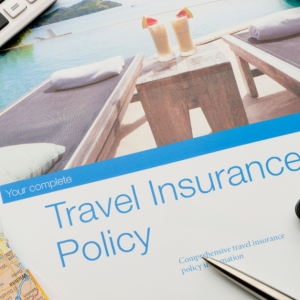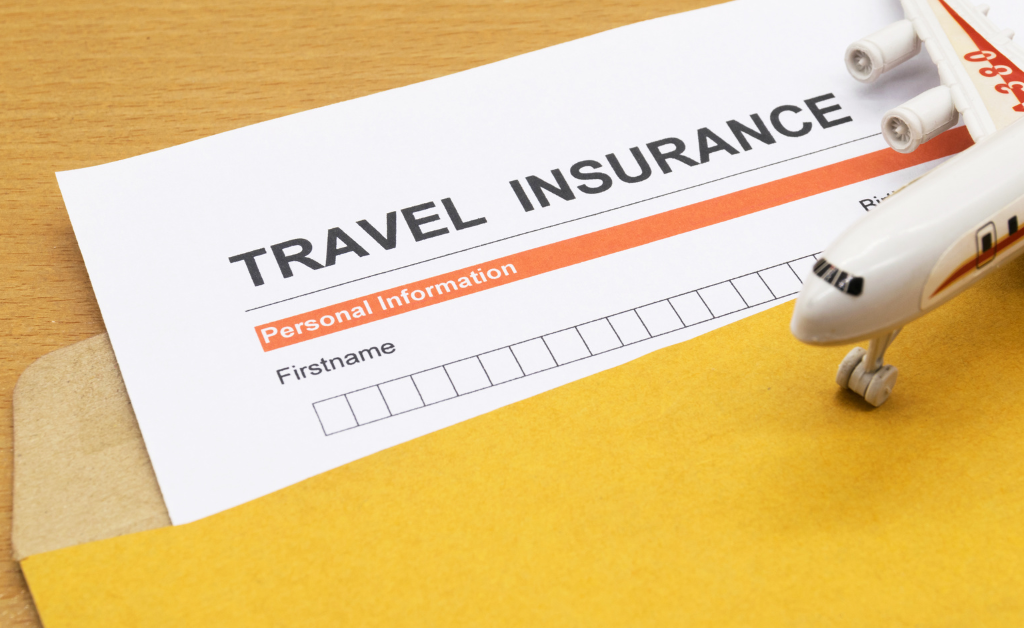Traveling can be an exhilarating experience, but it also comes with its share of risks. That’s where travel insurance comes into play. In this article, we’ll explore the ins and outs of the travel insurance system. From understanding its importance to navigating the types of coverage available and how it works, this guide will provide you with valuable insights to ensure you’re well-prepared for your next journey. Whether you’re embarking on a weekend getaway or a round-the-world adventure, understanding the travel insurance system is essential for peace of mind while traveling.
Introduction to Travel Insurance System

Travel insurance is a financial product designed to provide protection and coverage for travelers against unforeseen events and emergencies before or during their trip. Here’s an overview of the key aspects of travel insurance:
a. Definition: Travel insurance is a type of insurance policy that offers coverage for various travel-related risks, including trip cancellations, medical emergencies, lost luggage, flight delays, and more. It provides travelers with financial protection and assistance in navigating unexpected situations while traveling.
b. Purpose: The primary purpose of travel insurance is to mitigate the financial risks associated with traveling. It helps travelers cope with the financial consequences of unforeseen events such as trip cancellations, medical emergencies, or lost belongings by providing reimbursement for covered expenses.
c. Coverage Options: Travel insurance policies typically offer a range of coverage options to meet the diverse needs of travelers. Common types of coverage include trip cancellation/interruption, emergency medical and dental expenses, emergency medical evacuation, baggage loss/delay, travel delays, and personal liability coverage.
d. Policy Components: Travel insurance policies consist of various components, including coverage limits, deductibles, exclusions, and optional add-ons or riders. Understanding these policy components is essential for selecting the right coverage and ensuring that you have adequate protection for your travel needs.
e. Eligibility: Travel insurance is available to individuals of all ages and can be purchased for various types of trips, including domestic and international travel, single trips, multi-trip policies, and group travel. Eligibility criteria may vary depending on the insurer and the type of coverage desired.
f. Purchasing Options: Travel insurance can be purchased from insurance companies, travel agencies, airlines, and online insurance brokers. Travelers have the flexibility to choose from a wide range of insurers and policies to find the coverage that best suits their needs and budget.
g. Considerations: When purchasing travel insurance, travelers should consider factors such as the destination, duration of the trip, activities planned, age and health status, coverage limits and exclusions, premium costs, and policy features. Assessing these factors helps travelers select the most appropriate coverage for their specific travel circumstances.
h. Regulatory Framework: The travel insurance industry is subject to regulatory oversight by government agencies or regulatory bodies in many countries. These regulations aim to ensure consumer protection, transparency, and fair practices within the travel insurance market.
Importance of Travel Insurance System
Travel insurance plays a crucial role in providing financial protection and peace of mind for travelers. Here’s a detailed look at why travel insurance is essential:
a. Medical Emergencies: One of the primary reasons for having travel insurance is to cover medical emergencies that may arise during your trip. Whether you fall ill, sustain an injury, or require emergency medical treatment while traveling, travel insurance ensures that you have access to medical care without worrying about exorbitant medical expenses. This coverage includes doctor visits, hospitalization, ambulance services, prescription medications, and even emergency medical evacuation to a suitable medical facility if necessary.
b. Trip Cancellations and Interruptions: Travel plans can change unexpectedly due to various reasons such as illness, injury, family emergencies, or unforeseen circumstances at your destination. Travel insurance provides coverage for trip cancellations and interruptions, reimbursing you for non-refundable expenses such as flights, accommodations, tours, and activities if your trip is canceled or cut short due to covered reasons. This coverage helps minimize financial losses and allows you to reschedule or recoup expenses incurred due to unexpected disruptions to your travel plans.
c. Lost or Delayed Baggage: Another essential aspect of travel insurance is coverage for lost, stolen, or delayed baggage. If your luggage is lost, stolen, or delayed by the airline or transportation provider, travel insurance reimburses you for the cost of replacing essential items, clothing, toiletries, and other belongings. This coverage ensures that you’re not left stranded without your belongings and can continue your trip without significant inconvenience or financial burden.
d. Travel Delays and Missed Connections: Travel insurance provides coverage for travel delays and missed connections due to factors such as flight cancellations, severe weather, natural disasters, or airline strikes. If you’re delayed for a certain period, travel insurance reimburses you for additional expenses incurred, such as meals, accommodations, transportation, or rebooking fees. This coverage helps minimize the inconvenience and financial impact of unexpected travel disruptions, allowing you to continue your journey or return home safely.
e. Emergency Assistance Services: In addition to financial protection, travel insurance offers access to emergency assistance services, which can be invaluable when facing challenging situations while traveling. These services typically include 24/7 access to a helpline for medical emergencies, travel assistance for lost or stolen belongings, coordination of emergency medical evacuations, and access to local medical providers and facilities. Emergency assistance services provide essential support and guidance when navigating unfamiliar environments and unexpected emergencies abroad.
f. Personal Liability Coverage: Travel insurance may also include personal liability coverage, which protects you in case you accidentally cause injury to someone else or damage to their property while traveling. This coverage can help cover legal expenses and compensation payments if you’re found responsible for an accident or injury, providing financial protection and peace of mind during your travels.
g. Peace of Mind: Ultimately, travel insurance offers peace of mind knowing that you’re financially protected against unforeseen events and emergencies while traveling. Whether it’s a medical emergency, trip cancellation, lost baggage, or travel delay, travel insurance provides reassurance that you can handle unexpected situations without significant financial hardship or stress. Having travel insurance allows you to focus on enjoying your trip and exploring new destinations without worrying about what might go wrong.
Types of Travel Insurance System Coverage

Travel insurance offers a variety of coverage options to meet the diverse needs of travelers. Here’s an in-depth exploration of the types of coverage available:
a. Trip Cancellation/Interruption Insurance: Trip cancellation/interruption insurance provides coverage for non-refundable expenses if your trip is canceled or interrupted due to covered reasons such as illness, injury, death of a family member, natural disasters, or travel advisories. This coverage reimburses you for expenses such as flights, accommodations, tours, and activities that you’ve already paid for but are unable to use due to unforeseen circumstances.
b. Emergency Medical and Dental Coverage: Emergency medical and dental coverage provides reimbursement for medical expenses incurred due to illness or injury while traveling. This coverage includes doctor visits, hospitalization, emergency medical treatment, prescription medications, and dental care. It also typically covers emergency medical evacuation to a suitable medical facility if necessary, ensuring that you receive appropriate medical care while abroad.
c. Emergency Medical Evacuation: Emergency medical evacuation coverage provides financial assistance for evacuating you to the nearest appropriate medical facility if you suffer a serious illness or injury while traveling and require medical transportation. This coverage is essential in remote or underdeveloped areas where adequate medical care may not be available locally. It ensures that you receive timely and appropriate medical treatment, even if it requires transportation to another location or back to your home country.
d. Baggage Loss/Delay Insurance: Baggage loss/delay insurance provides coverage for lost, stolen, or delayed baggage during your trip. If your luggage is lost or stolen, this coverage reimburses you for the cost of replacing essential items, clothing, toiletries, and other belongings. If your baggage is delayed by the airline or transportation provider, this coverage reimburses you for expenses incurred purchasing necessary items while waiting for your luggage to be returned.
e. Travel Delay Insurance: Travel delay insurance offers coverage for expenses incurred due to travel delays caused by factors such as flight cancellations, severe weather, natural disasters, or airline strikes. If your travel is delayed for a certain period, this coverage reimburses you for additional expenses such as meals, accommodations, transportation, or rebooking fees. It helps minimize the inconvenience and financial impact of unexpected travel disruptions, allowing you to continue your journey or return home safely.
f. Rental Car Insurance: Rental car insurance provides coverage for rental vehicles against damage, theft, and liability while traveling. It typically includes collision damage waiver (CDW) or loss damage waiver (LDW) coverage, which waives your responsibility for damage to the rental car in case of accidents, theft, or vandalism. It may also include liability coverage for damages to third-party property or injuries to third parties while driving the rental car.
g. Adventure Sports Coverage: Adventure sports coverage offers protection for participating in high-risk activities and adventure sports such as skiing, snowboarding, scuba diving, bungee jumping, and mountain climbing. This coverage typically includes medical expenses, emergency medical evacuation, and accidental death and dismemberment benefits specifically related to participation in covered sports and activities. It ensures that you’re adequately protected against the risks associated with adventurous pursuits while traveling.
h. Personal Liability Insurance: Personal liability insurance provides coverage for legal expenses and compensation payments if you accidentally cause injury to someone else or damage to their property while traveling. This coverage protects you against potential lawsuits and financial liability arising from accidental harm or property damage caused by your actions or negligence while traveling.
i. Cancel for Any Reason (CFAR) Insurance: Cancel for Any Reason (CFAR) insurance is an optional coverage that allows you to cancel your trip for any reason not covered by standard trip cancellation/interruption insurance. CFAR insurance provides more flexibility and broader coverage than standard policies, allowing you to cancel your trip and receive reimbursement for a percentage of your non-refundable expenses, regardless of the reason for cancellation. It’s a valuable option for travelers who want added flexibility and peace of mind when planning their trips.
Understanding the Travel Insurance System
Understanding the travel insurance system involves grasping the fundamental concepts, processes, and stakeholders involved in providing and administering travel insurance. Here’s a detailed exploration of the key components of the travel insurance system:
a. Insurers: Insurers are the primary entities that underwrite and provide travel insurance policies. These companies assess risks, determine coverage options, set premiums, and handle claims processing. Insurers may offer a range of travel insurance products tailored to different travel needs and preferences. Travelers can purchase insurance directly from insurers or through insurance brokers, agents, or online platforms.
b. Policyholders: Policyholders are individuals or groups who purchase travel insurance policies to protect themselves against unforeseen events and emergencies while traveling. Policyholders pay premiums to insurers in exchange for coverage and benefits specified in the policy. Policyholders are responsible for understanding the terms and conditions of their insurance policies, adhering to coverage limitations and exclusions, and filing claims when necessary.
c. Coverage Terms and Conditions: Travel insurance policies contain specific terms and conditions that outline the scope of coverage, coverage limits, exclusions, deductibles, and other policy provisions. It’s essential for policyholders to carefully review and understand these terms and conditions to ensure they have adequate protection and know what is covered and what is not covered by their insurance policies. Common coverage terms and conditions include trip cancellation/interruption, emergency medical coverage, baggage loss/delay, travel delays, and personal liability coverage.
d. Premiums: Premiums are the payments made by policyholders to insurers in exchange for travel insurance coverage. Premiums are typically calculated based on various factors, including the traveler’s age, destination, trip duration, coverage limits, deductible amount, and optional add-ons or riders. Insurers use actuarial data and risk assessment models to determine premiums that reflect the likelihood of a claim occurring and the potential cost of providing coverage.
e. Claims Process: The claims process is the procedure for policyholders to request reimbursement for covered expenses incurred due to unexpected events or emergencies while traveling. When a covered event occurs, policyholders must submit a claim to their insurance company, providing documentation and evidence of the expenses incurred. Insurers evaluate the claim, verify coverage, and process the claim according to the terms and conditions of the policy. Policyholders should familiarize themselves with the claims process and requirements to ensure prompt and efficient claims resolution.
f. Exclusions and Limitations: Travel insurance policies typically include exclusions and limitations that specify situations, events, or circumstances not covered by the policy. Common exclusions may include pre-existing medical conditions, high-risk activities or sports, acts of war or terrorism, pandemics, and travel to countries under travel advisories. It’s essential for policyholders to understand these exclusions and limitations to avoid misunderstandings and ensure they have realistic expectations of their coverage.
g. Regulatory Oversight: The travel insurance industry is subject to regulatory oversight by government agencies or regulatory bodies in many countries. These regulations aim to protect consumers, ensure transparency and fairness in insurance practices, and maintain the financial stability of insurers. Regulatory requirements may include licensing of insurers, consumer protection measures, disclosure of policy terms and conditions, and solvency standards to safeguard policyholders’ interests.
h. Consumer Education and Advocacy: Consumer education and advocacy play a crucial role in empowering travelers to make informed decisions about travel insurance. Educational resources, guides, and tools help consumers understand the complexities of travel insurance, compare coverage options, and choose policies that best suit their needs and preferences. Consumer advocacy organizations also advocate for consumer rights, promote transparency and accountability in the travel insurance industry, and provide assistance to consumers in resolving disputes with insurers.
How Travel Insurance System Works
Understanding how travel insurance works is essential for travelers to maximize its benefits and ensure they’re adequately protected during their journeys. Here’s a detailed overview of how travel insurance operates:
a. Purchasing a Policy: The first step in obtaining travel insurance is to purchase a policy from an insurance provider. Travelers can choose from various types of policies, including single-trip, multi-trip, or annual policies, depending on their travel frequency and duration. Policies can be purchased directly from insurance companies, travel agencies, online brokers, or through travel booking platforms.
b. Coverage Selection: When purchasing a travel insurance policy, travelers need to select the appropriate coverage options based on their travel plans, destination, activities, and budget. Common coverage options include trip cancellation/interruption, emergency medical and dental expenses, baggage loss/delay, travel delays, and personal liability coverage. Travelers may also opt for additional coverage for specific risks or activities, such as adventure sports or rental car insurance.
c. Policy Activation: Once the policy is purchased and the premium is paid, the travel insurance coverage becomes active according to the policy’s effective dates. Coverage typically begins on the policy’s start date, which is usually the departure date or the date the policy is purchased, and ends on the policy’s end date, which is usually the return date or the duration of the trip.
d. Coverage Period: Travel insurance coverage is typically valid for the duration of the insured trip, from the departure date to the return date specified in the policy. Some policies may also include coverage for a specified period before the trip begins, known as the trip cancellation coverage period, which provides protection for unforeseen events that occur before departure and result in trip cancellation or postponement.
e. Coverage Benefits: During the coverage period, travelers are entitled to various benefits and protections outlined in the travel insurance policy. These benefits may include reimbursement for non-refundable expenses in case of trip cancellation or interruption, coverage for emergency medical expenses, reimbursement for lost or delayed baggage, compensation for travel delays, and assistance services for navigating emergencies while traveling.
f. Filing a Claim: In the event of a covered incident or emergency during travel, travelers must file a claim with the insurance company to receive reimbursement for eligible expenses. The claims process typically involves submitting documentation and supporting evidence of the claim, such as medical bills, receipts, police reports, and proof of travel. Insurance companies review the claim and process payments according to the terms and conditions of the policy.
g. Receiving Reimbursement: Once the claim is approved, the insurance company reimburses the traveler for eligible expenses incurred during the trip. Reimbursement may be provided through direct payment to the traveler or through reimbursement of expenses already paid by the traveler. The amount of reimbursement depends on the coverage limits, deductibles, and terms of the policy.
h. Assistance Services: In addition to financial reimbursement, travel insurance policies often include assistance services to support travelers in navigating emergencies and unforeseen events while traveling. These services may include access to a 24/7 helpline for medical emergencies, travel assistance for lost or stolen belongings, coordination of emergency medical evacuations, and access to local resources and providers.
i. Policy Expiry: Travel insurance coverage expires at the end of the policy’s coverage period or upon the traveler’s return from the trip, whichever comes first. Once the coverage period ends, travelers are no longer entitled to benefits or protections under the policy. If travelers plan to take additional trips, they may need to purchase new policies or extend existing coverage accordingly.
Choosing the Right Travel Insurance System Policy

Selecting the right travel insurance policy is crucial for ensuring comprehensive coverage that meets your specific needs and provides peace of mind during your travels. Here’s a detailed guide on how to choose the right travel insurance policy:
a. Assess Your Travel Needs: Start by assessing your travel plans, activities, destination, and potential risks to determine the coverage options you require. Consider factors such as the duration of your trip, the type of activities you’ll be engaging in, any pre-existing medical conditions, and the level of coverage needed for peace of mind.
b. Research Insurance Providers: Research multiple insurance providers to compare policies, coverage options, premiums, and customer reviews. Look for reputable insurers with a strong financial rating, positive customer feedback, and a track record of reliable service. Consider factors such as policy features, claims processing efficiency, and customer support quality when evaluating insurance providers.
c. Compare Coverage Options: Review the coverage options offered by different travel insurance policies to ensure they align with your specific needs and preferences. Compare coverage limits, exclusions, deductibles, and optional add-ons or riders to determine which policy offers the best value and protection for your travel circumstances.
d. Consider Additional Features: Consider additional features or riders that may enhance your travel insurance coverage based on your individual needs and concerns. Optional add-ons such as cancel for any reason (CFAR) insurance, rental car coverage, adventure sports coverage, and coverage for pre-existing medical conditions can provide added flexibility and protection for your travels.
e. Understand Policy Terms and Conditions: Carefully review the terms and conditions of each travel insurance policy to understand the scope of coverage, exclusions, limitations, and requirements for filing claims. Pay attention to any restrictions or conditions that may affect coverage eligibility, such as pre-existing medical conditions, age limits, or travel advisories for specific destinations.
f. Evaluate Premium Costs: Compare premium costs for different travel insurance policies to find coverage that fits within your budget while providing adequate protection. Consider factors such as coverage limits, deductibles, and optional features when evaluating the cost-effectiveness of each policy. Balance affordability with coverage levels to ensure you’re getting the best value for your investment.
g. Read Customer Reviews: Read customer reviews and testimonials to learn about other travelers’ experiences with different insurance providers and policies. Pay attention to feedback regarding claims processing, customer service quality, and overall satisfaction to gauge the reliability and credibility of insurance companies.
h. Seek Professional Advice: If you’re unsure about which travel insurance policy to choose or need assistance in understanding policy terms and conditions, consider seeking advice from insurance brokers, travel agents, or financial advisors. These professionals can offer personalized recommendations and guidance based on your individual needs and circumstances.
i. Review and Update Regularly: Once you’ve selected a travel insurance policy, periodically review and update your coverage to ensure it remains suitable for your evolving travel plans and needs. Update your policy to reflect changes such as extended trip durations, additional destinations, or new activities to ensure continuous protection and peace of mind during your travels.
In conclusion, understanding the intricacies of the travel insurance system is essential for travelers seeking peace of mind and financial protection during their journeys.
By comprehending the various types of coverage available, the role of insurance providers, policy terms and conditions, premiums, and the claims process, travelers can make informed decisions when selecting travel insurance policies that align with their needs and preferences.
Additionally, recognizing the importance of travel insurance in mitigating risks associated with medical emergencies, trip cancellations, lost baggage, and other unforeseen events underscores its value as an essential component of travel planning.
With a solid understanding of the travel insurance system, travelers can embark on their adventures with confidence, knowing that they have comprehensive coverage and support services to navigate unexpected challenges while exploring the world.
